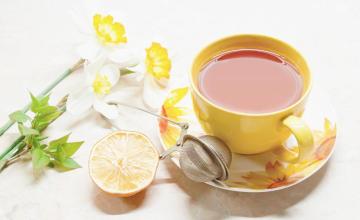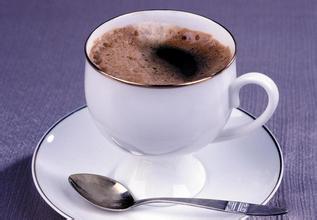Full-bodied bitter coffee manor producing area flavor and taste characteristics of high-quality coffee beans
The types of rainfall can be divided into bimodal distribution and unimodal distribution. The areas with double bee rainfall include the provinces around the Lake Victoria basin, the northeast highlands, the coastal and inland northeastern. The bimodal rainfall area is characterized by two rainy seasons. The short rainy season occurs from September to December. The total rainfall can reach 200-500 mm. The long rainy season occurs from March to May, and the rainfall reaches 300-600 mm. The areas outside the double bee distribution rainfall area belong to the single bee distribution rainfall area, the rainfall time is from November to April, and the rainfall reaches 500-1000 mm.
Hydrology
The main rivers in Tanzania are the Rufidi River (1400 km long), the Pangani River, the Rufu River, the Wami River and so on. There are many lakes, including Lake Victoria, Lake Tanganyika and Lake Malawi. [7]
Tanzania is rich in mineral resources. By 2014, the major minerals identified include gold, diamond, iron, nickel, phosphate, coal and various gemstones, ranking fifth in Africa in total. Tanzania also has huge natural gas reserves. According to official data released by Tanzania, Tanzania has proven natural gas reserves of 44 trillion cubic feet, and the total reserves are expected to reach at least 200 trillion cubic feet. [8]
Gold
Found in many parts of the mainland, Lake Victoria is comparable in geology and scale to the major gold producing areas of Australia, Canada, South Africa and Zimbabwe, with proven reserves of 18 million ounces and estimated reserves of up to 30 million ounces. [8]
Diamond
As of 2014, about 20 per cent of the 300 kimberlite known to contain diamonds, with proven diamond mineral reserves of 2.5 million tons. In addition, there are also diamond deposits in 600 geologically similar kimberlite and the impact zones at the edges of the East African Rift Valley, Lake Rukwa and Cyrus basins. First: choose good quality coffee beans, because the use of poor quality coffee beans, of course, will greatly damage the flavor of coffee, even if a very balanced single coffee, but also can not make delicious coffee, the choice of good quality coffee beans, is the biggest point.
Second: get rid of defective beans, mixed with defective beans, the taste will become worse. Therefore, it is better to be missing than rotten to get rid of the defective beans without stinginess. For example, long worms with holes, abnormal development, shell without benevolence, will be picked out.
Third: understand the characteristics of coffee beans, if the individual characteristics of the coffee beans to be blended are not well understood, it is difficult to mix good or desired coffee, such as mocha coffee is more sour, it can not be used to dilute the sour taste of coffee.
Fourth: understand the different degree of roasting, different coffee beans are roasted differently, their flavor is also different, so we should have a good grasp, such as Kilimanjaro, Blue Mountain is generally medium-shallow baking, carbon roasting is deep baking and so on.
Making fancy coffee: there are many kinds of fancy coffee. Take Japanese cappuccino as an example.
First, make Kilimanjaro coffee beans into hot coffee.
2. Pour hot water into the coffee cup, warm the coffee cup with 20ml for 30 seconds, then wipe dry.
3. Put the fine sugar in the coffee cup. Pour in the hot coffee without stirring.
4. Cover the surface of the coffee with whipped cream from the edge of the cup to the center of the cup in a spiral way. make a spiral pattern.
5. Sprinkle cinnamon powder and lemon peel crumbs and serve.
Select editors
"fresh" is the most important factor in buying Kilimanjaro coffee beans. There are several steps to judge whether the beans are fresh or not.
1. Grab a handful of coffee beans and feel whether they are solid beans with the palm of your hand.
2. Whether it is enough to smell the aroma close to the nose.
3. Put a bean into your mouth and bite it twice. There is a clear sound indicating that the bean is well preserved and not damp.
If you want to buy a single Kilimanjaro coffee bean, grab a handful in the palm of your hand, in addition to the above judgment, but also look at whether the color, grain size and shape of each bean are similar, so as not to buy mixed beans. If you buy mixed beans, it is normal to have different colors, grain sizes and shapes.
Composition editing
Raw beans: raw beans are unbaked beans, which contain 11.5% fat; 11.5% moisture; 28.6% crude fiber; 4.0% minerals; 6.2% tannic acid; 1.3% caffeine; 17.0% essence; 8.1% sugar; 11.8% protein.
Baked beans: baked beans, which contain 13.0% fat; 1.5% caffeine; 29.5% crude fiber; 2.6% moisture; 5.0% minerals; 4.2% tannic acid; 29.4% essence; 2.0% sugar; 12.8% protein.
Quality evaluation standard editor
Taste-smooth, rough, etc.
Particles-too light, too heavy, etc.
Acidity-slightly sour, over-acidic in the upper part, etc.
Freshness-- from old to fresh
Defects-acidic, grassy, moldy, etc.
Coffee cups-fiber baked, washed, burned, old cups, etc.
Overall assessment-peaceful, rich, bitter, etc.
Fragrance-- from weak to strong
Fullness-not full enough to be quite full

Important Notice :
前街咖啡 FrontStreet Coffee has moved to new addredd:
FrontStreet Coffee Address: 315,Donghua East Road,GuangZhou
Tel:020 38364473
- Prev

Flavor and taste of Jamaican Blue Mountain Coffee introduction to boutique coffee beans in manor area
In 1670, according to the Madrid Treaty, Spain formally ceded Jamaica and other places to Britain. The British immediately used the island of Jamaica as a base for their acts of piracy. Before the earthquake destroyed the port of Loire in 1692, it was once the capital of pirates in the Caribbean. Since then, the British built Kingston and gradually built it into the central city of Jamaica. After 1692,
- Next

Introduction of Coffee Coffee with a Special Flavor in Coffee Manor
In general, coffee is made by washing or insolating, removing the peel, pulp and sheepskin of coffee, and finally taking out coffee beans. But civet coffee uses the process of natural fermentation in animals to obtain coffee beans. Coupled with the fact that civets only exist in islands such as Indonesian islands, the time and place of infestation is mysterious, and the number is decreasing, which will lead to the price of civets coffee.
Related
- Detailed explanation of Jadeite planting Land in Panamanian Jadeite Manor introduction to the grading system of Jadeite competitive bidding, Red bid, Green bid and Rose Summer
- Story of Coffee planting in Brenka region of Costa Rica Stonehenge Manor anaerobic heavy honey treatment of flavor mouth
- What's on the barrel of Blue Mountain Coffee beans?
- Can American coffee also pull flowers? How to use hot American style to pull out a good-looking pattern?
- Can you make a cold extract with coffee beans? What is the right proportion for cold-extracted coffee formula?
- Indonesian PWN Gold Mandrine Coffee Origin Features Flavor How to Chong? Mandolin coffee is American.
- A brief introduction to the flavor characteristics of Brazilian yellow bourbon coffee beans
- What is the effect of different water quality on the flavor of cold-extracted coffee? What kind of water is best for brewing coffee?
- Why do you think of Rose Summer whenever you mention Panamanian coffee?
- Introduction to the characteristics of authentic blue mountain coffee bean producing areas? What is the CIB Coffee Authority in Jamaica?

